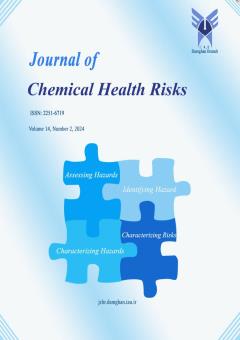Biodegradable Composite Film Based on Tapioca Starch/Bovine Gelatin with Roselle Calyx Extract and Zinc Oxide Nanorod
محورهای موضوعی :
Tahereh Sadeghi
1
,
Aidin Doroudi
2
![]() ,
Neda Sadat Aghayan
3
,
Neda Sadat Aghayan
3
![]() ,
Elinasadat Jodeiri Golabi
4
,
Elinasadat Jodeiri Golabi
4
![]() ,
Chris Allen
5
,
Chris Allen
5
1 - Department of Food Science and Technology, Science and Research Branch, Islamic Azad University, Tehran, Iran
2 - Biopolymer Department, Amirkabir University of Technology (Tehran Polytechnic), Tehran, Iran
3 - Department of Food Science and Technology, Shahrood Branch, Islamic Azad University, Shahrood, Iran
4 - Department of Food and Technology, Shabestar Branch, Islamic Azad University, Shabestar, Iran|Research and Development Group, Neshat Saba (Toghra) Food Industries Company, Tabriz, Iran
5 - Nano-Bio Science Group, Division of Food Technology, National Food Institute, Technical University of Denmark (DTU), Søborg, Denmark
کلید واژه: Mechanical Properties, Nanoparticle, water vapor permeability, Solubility, Bionanocomposite film, Intelligent packaging,
چکیده مقاله :
Biodegradable films based on natural molecules are used for food production protection to extend shelf life. The current work aimed to fabricate and characterize bionanocomposite films. The biodegradable films were prepared from a mixture of tapioca starch/bovine gelatin (TB) with the loading of roselle calyx extract (RCE) and zinc oxide nanorod (ZnO-N). The incorporation of ZnO-N and RCE improved the mechanical and barrier properties of films. ZnO-N/RCE and RCE incorporated composite films indicated lower water vapor permeability (WVP) than neat film, 3.36 ×10⁻⁷, 3.96×10⁻⁷, and, 4.2×10⁻⁷ g/mPah respectively. Elongation at break, Young's modulus, and tensile strength of TB film, TB/RCE, and TB/RCE/ZnO-N film were measured as follows: 18.44%, 14.56%, and 10.69%; 0.79 MPa, 1.52 MPa, and 2.65 MPa; and 14.4 MPa, 21.85 MPa, and 28.22 MPa, respectively. The solubility of the active films decreased from 40.33% to 33.68% by the addition of RCE and ZnO-N into the composite matrix. This study indicated composite films based on starch/protein incorporated RCE and ZnO-N have the positive potential for applications in bionanocomposite packaging.
Biodegradable films based on natural molecules are used for food production protection to extend shelf life. The current work aimed to fabricate and characterize bionanocomposite films. The biodegradable films were prepared from a mixture of tapioca starch/bovine gelatin (TB) with the loading of roselle calyx extract (RCE) and zinc oxide nanorod (ZnO-N). The incorporation of ZnO-N and RCE improved the mechanical and barrier properties of films. ZnO-N/RCE and RCE incorporated composite films indicated lower water vapor permeability (WVP) than neat film, 3.36 ×10⁻⁷, 3.96×10⁻⁷, and, 4.2×10⁻⁷ g/mPah respectively. Elongation at break, Young's modulus, and tensile strength of TB film, TB/RCE, and TB/RCE/ZnO-N film were measured as follows: 18.44%, 14.56%, and 10.69%; 0.79 MPa, 1.52 MPa, and 2.65 MPa; and 14.4 MPa, 21.85 MPa, and 28.22 MPa, respectively. The solubility of the active films decreased from 40.33% to 33.68% by the addition of RCE and ZnO-N into the composite matrix. This study indicated composite films based on starch/protein incorporated RCE and ZnO-N have the positive potential for applications in bionanocomposite packaging.


